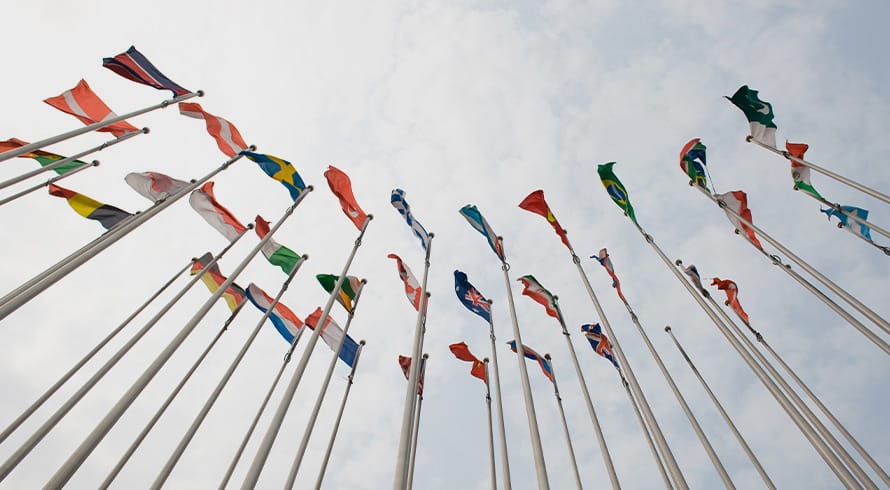Fictional citations, real consequences: A cautionary tale for the modern lawyer
At a glance
- In Mavundla v MEC Department of Co-Operative Government and Traditional Affairs and Others (Case No. 7940/2024P), the applicant’s legal team sought leave to appeal a prior ruling and sought to rely on non-existent cases in doing so.
- The presiding judge suggested that it was highly likely that generative AI tools were used.This debacle illustrates how “AI hallucinations” can undermine trust in legal proceedings, particularly when references are not thoroughly checked against official databases.
- Far from condemning technology, the Mavundla judgment stands as a cautionary tale, emphasising the need to balance AI’s efficiencies with proper oversight and ethical rigour.
The case in a nutshell
In Mavundla v MEC Department of Co-Operative Government and Traditional Affairs and Others (Case No. 7940/2024P), the applicant’s legal team sought leave to appeal against a prior High Court ruling. Alarm bells rang when the presiding judge discovered that seven of the nine cases relied on by the applicant’s team in support of the application for leave to appeal did not exist and the remaining two cases also suffered from some or other deficiency in the manner in which they were cited.
Having noted that seven referenced cases did not appear in any of the usual legal databases, the presiding judge granted the legal team multiple chances to verify or produce these citations. Under normal circumstances, genuine authorities are easily located in official repositories like the South African Law Reports (Juta), the All South African Law Reports (LexisNexis), or SAFLII. It was therefore highly unusual that the applicant’s legal team could not provide the requisite verification.
The legal team was unable to give the court a satisfactory explanation for how these “mistakes” occurred, and the Honourable Judge Bezuidenhout suggested it was likely that a generative AI tool had been used. Although the team (which included an advocate) attributed the references to a candidate legal practitioner, the absence of proper oversight from senior members remains a serious concern. Adding to the controversy, the candidate legal practitioner denied using AI when questioned, potentially compounding the initial negligence with dishonesty. The firm’s senior principal offered little reassurance, seemingly attributing the errors to a lack of technological proficiency.
The judge ultimately dismissed the application for leave to appeal, penalising the attorneys by ordering them to pay certain costs from their own pockets and referring the matter to the Legal Practice Council for possible professional misconduct proceedings. It remains to be seen what additional penalties the advocate, the law firm, the candidate legal practitioner and the candidate legal practitioner’s principal might still encounter.
The broader issue: “AI hallucinations”
The incident highlights an unsettling flaw, sometimes referred to as “AI hallucinations,” where an AI engine confidently produces plausible-sounding but ultimately fictional references. These bogus authorities can appear deceptively legitimate, even to the trained eye, usually appearing complete with case numbers, year citations, and made-up judicial remarks. In fast-paced legal practice, practitioners under time pressure may mistakenly accept these results as genuine unless they diligently confirm them against trustworthy sources.
The real harm arises because legal argument depends on accurate precedent. When false citations slip through, legal practitioners risk embarrassment and costs orders, and undermine the court’s trust in counsel’s integrity. In the South African context, which is grounded in constitutional values and a strong tradition of precedent, any contamination of the record by fake cases erodes the legal system’s credibility.
Ethical duties and professional obligations
South African legal practitioners owe a fundamental duty of candour to the court, as enshrined in the Code of Conduct for Legal Practitioners. The judge in Mavundla underscored that courts assume counsel’s cited authorities are real and relevant. Whether caused by negligence, over-reliance on AI, or supervision lapses, presenting fictitious precedents to a court is the direct opposite of that duty.
Candidate and junior legal practitioners, in particular, may be tempted to rely on AI for efficiency. However, this does not absolve them – or their supervising principals – of the ethical obligation to ensure all submissions are accurate.
Internationally, there is precedent that technological incompetence can, in itself, be deemed unethical. It certainly does not justify allowing junior practitioners to use AI without proper oversight or guidance.
“I didn’t know that the AI made it up” is not, nor will it ever be, an acceptable excuse.
Constant vigilance
Vigilance is non-negotiable when it comes to legal practice, and the cornerstone of AI-assisted legal research is meticulous verification.
No matter how convincingly an AI tool presents a source, legal practitioners must always confirm its authenticity and relevance using reputable databases. Rather than relying on AI-generated summaries alone, legal practitioners should read the original judgments to avoid citing non-existent cases or misrepresenting the law.
By embedding these verification steps into daily practice, and through firm-wide guidelines, senior mentorship, and ongoing training, the legal profession can reap AI’s benefits without compromising on diligence and credibility.
The way forward
This judgment should serve as a catalyst for conversations about how best to integrate AI into a legal environment founded on precision. While the technology undeniably streamlines research, it must never replace a lawyer’s critical judgement. Indeed, AI is most beneficial when used in concert with human expertise: legal practitioners must do the heavy lifting to confirm, interpret and apply the law.
Ultimately, legal practice in South Africa is at a crossroads: we can embrace AI’s potential to improve efficiency and access to justice, but only if we remain vigilant. That means insisting on holistic training for candidate legal practitioners, using reliable databases and cultivating a culture where verifying citations is second nature. If the profession achieves this balance, AI can evolve from a risky shortcut into a powerful resource that enhances our work without compromising integrity.
Conclusion
At its core, the Mavundla judgment is not an indictment of the use of AI to enhance legal practice, nor should it be seen as such. It is, however, a cautionary tale against blindly trusting AI-generated results and abandoning the fundamentals of ethical legal practice.
The future of law lies not in choosing between human expertise and artificial intelligence, but in developing systems that leverage both while upholding the ethics of the legal profession.
The information and material published on this website is provided for general purposes only and does not constitute legal advice. We make every effort to ensure that the content is updated regularly and to offer the most current and accurate information. Please consult one of our lawyers on any specific legal problem or matter. We accept no responsibility for any loss or damage, whether direct or consequential, which may arise from reliance on the information contained in these pages. Please refer to our full terms and conditions. Copyright © 2025 Cliffe Dekker Hofmeyr. All rights reserved. For permission to reproduce an article or publication, please contact us cliffedekkerhofmeyr@cdhlegal.com.
Subscribe
We support our clients’ strategic and operational needs by offering innovative, integrated and high quality thought leadership. To stay up to date on the latest legal developments that may potentially impact your business, subscribe to our alerts, seminar and webinar invitations.
Subscribe



